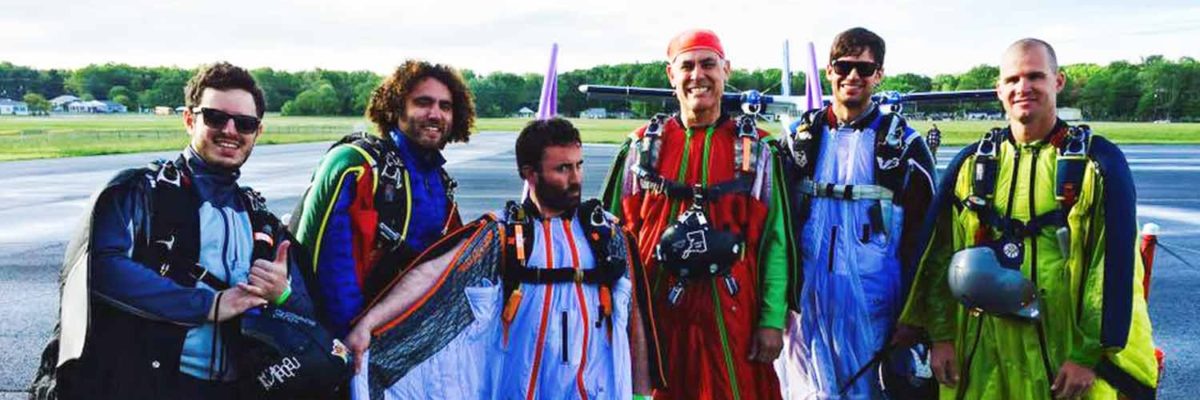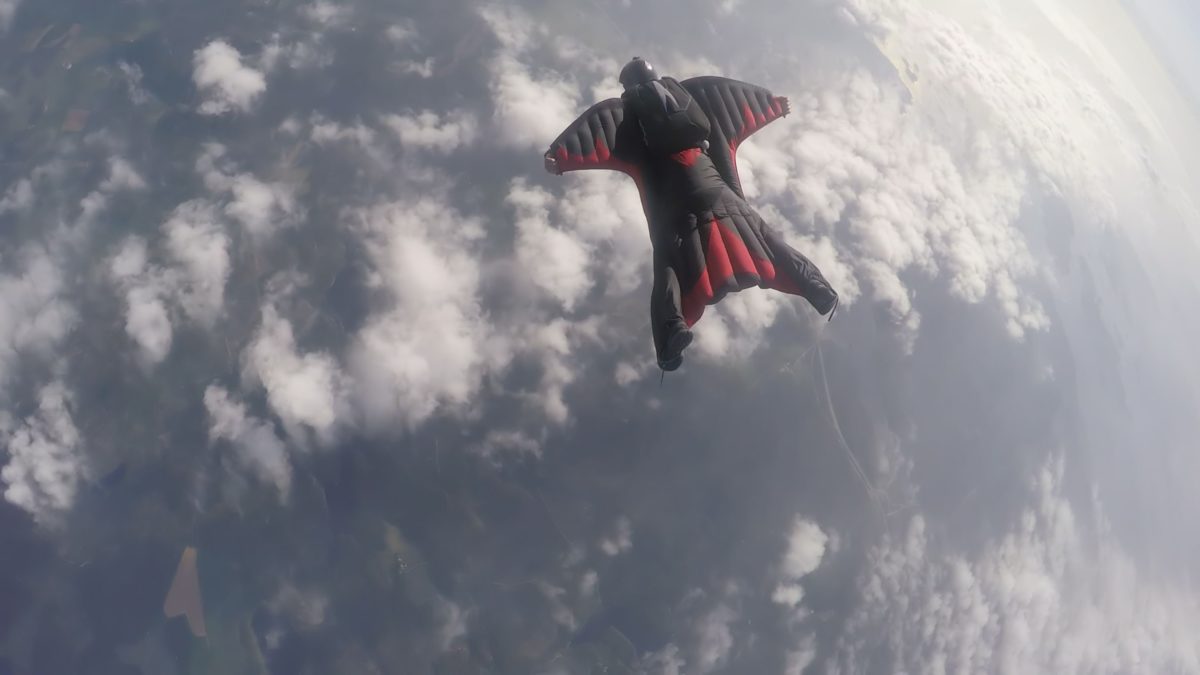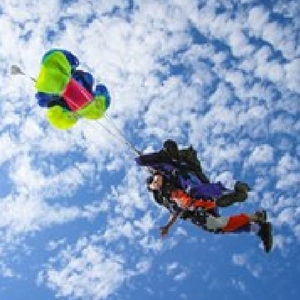
What is Wingsuit Flying?
Thursday, December 21, 2023
- Skydive Orange
- 12/21/23
- 0
- Wingsuit
Wingsuit skydiving has become one of the most recognizable disciplines in the sport because of its eye-catching suits, swift movements, and dreamy backdrops. From adrenaline-pumping wingsuit jumps to the science behind the wingsuit, join us on a high-flying adventure to explore the depths of wingsuit flying.
What is Wingsuit Flying?
Wingsuit flying, or wingsuiting, is a skydiving discipline in which a skydiver will wear a special gliding suit, or “squirrel” suit, to fly through the air much like a bird. The winged jumpsuit has two arm wings and a single-leg wing that is composed of inflatable pressurized nylon cells, essentially turning your entire body into a wing. Modern wingsuits were developed in the 1990s as a way to increase freefall time, speed, and performance.
How Does Wingsuit Flying Work?
The wingsuit works by using the relative wind (the wind directly opposite of the direction of travel) which creates an airfoil. The airfoil design allows the wingsuit to create a significant amount of lift to carry the wingsuit pilot across the skies.
Wingsuits can slow down the descent rate and create more of a horizontal gliding motion rather than going up like in an airplane. With practice, the wingsuit pilot can control the direction and speed of the flight by changing the angle and shape of the wingsuit. Wingsuit flying requires major skills and precise movements of the entire body.
How do people in wingsuits stop? While Gary Connery performed a successful stunt of landing a wingsuit without a parachute in 2012, a wingsuit pilot does not typically land with just a wingsuit. Following the wingsuit flight, the skydiver must deploy a parachute to safely land on the ground.
How Long Can You Fly With a Wingsuit?
How far can you go with a wingsuit? The wingsuit glide ratio for experienced wingsuit pilots is usually around 3:1, which means for every foot the wingsuit pilot descends, they can travel three feet horizontally.
The wingsuit glide ratio is affected by the size of the wingsuit, the exit altitude, the relative wind, and the body position of the wingsuit pilot. In a typical wingsuit jump, the wingsuit pilot can cover a distance of about 4.6 miles. The current Guinness World Record holder for the greatest absolute distance flown in a wingsuit is held by Kyle Lobpries (USA) at a stunning 19.94 miles on May 30, 2016.
How long can you fly with a wingsuit? Wingsuit flights generally last about two to three minutes before deploying the parachute, which is more than twice as long as freefall lasts during a typical skydive. The Guinness World Record holder for the longest duration wingsuit flight is 9 minutes 6 seconds, achieved by Jhonathan Florez (Colombia), on April 20, 2012. Wow!
Can Anyone Fly Wingsuit?
Flying a wingsuit requires a particular set of skydiving skills and an understanding of bodyflight, which is why the United States Parachute Association (USPA) requires a minimum of 200 jumps (performed within the past 18 months) before completing a wingsuit first jump course and making a wingsuit jump.
The wingsuit jump course includes a lot of information including but not limited to equipment considerations, wingsuit designs and attachments, emergency procedures, water landings, body positions, and so on! This is why it is important to already be an experienced skydiver to prevent information overload.
Is Wingsuit Safer Than Skydiving?
In 2022, according to the USPA, skydiving had an estimated fatality rate of about 1 in 200,000 jumps among licensed skydivers. Wingsuit BASE jumping isn’t as regulated as skydiving, so some fatalities are not documented. However, it is estimated that nearly 1 in 500 BASE wingsuit jumps result in death. Wingsuit fatalities are most commonly due to human error and lack of experience, which is why you should not attempt wingsuit flying unless you are an experienced skydiver with 200+ jumps under your belt.

Risks of Wingsuit Flying:
- Poor Judgment: When you’re exceeding speeds of 200 mph in a wingsuit, even the slightest miscalculations can lead to serious injury or death – which is why pilots must always be cautious of their surroundings at all times during a flight.
- Improper Planning: Pre-planning jumps is crucial before wingsuiting to avoid mid-air collisions with other jumpers or objects, such as buildings or power lines.
- Weather Conditions: Poor weather conditions also play a role in increasing the risk when wingsuiting; wind, thermals, fog, etc. can all affect your flight plan.
- Equipment Failure: The equipment (wingsuit and parachute) you use is mandatory for saving your life, therefore careful inspection of your gear before each flight is paramount. If there is ever an issue with your suit, such as a rip or tear that could prevent it from generating lift, it should be repaired immediately. You should always err on the side of caution while wingsuit flying.
Wingsuit flying is one of the most exhilarating things you can do in your life and the community that it brings together is what keeps jumpers in the sport for a lifetime. The first step to achieving your dreams of flying like a bird is by learning to skydive solo and becoming a licensed skydiver! Once you reach the 200 jump requirement, you can sign up for our Wingsuit Jump Course right here at Skydive Orange.
Have more questions? Contact one of our helpful team members at Skydive Orange today. Blue skies!
Tags: wingsuit
The largest tandem skydiving center near Northern Virginia, Washington D.C. and Maryland.
Copyright © 2025, Skydive Orange, All Rights Reserved.
DropZone Web Design & Marketing by Beyond Marketing, LLC


